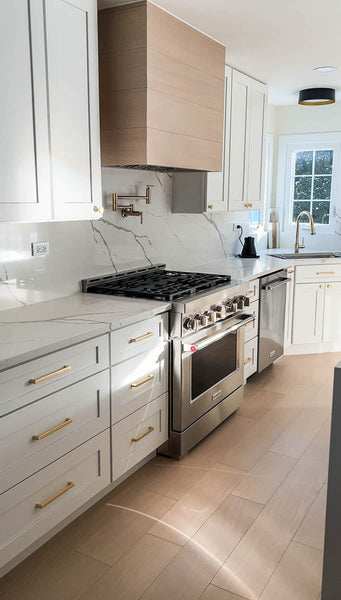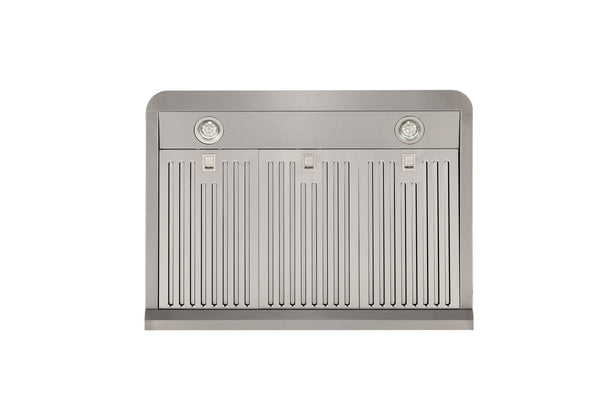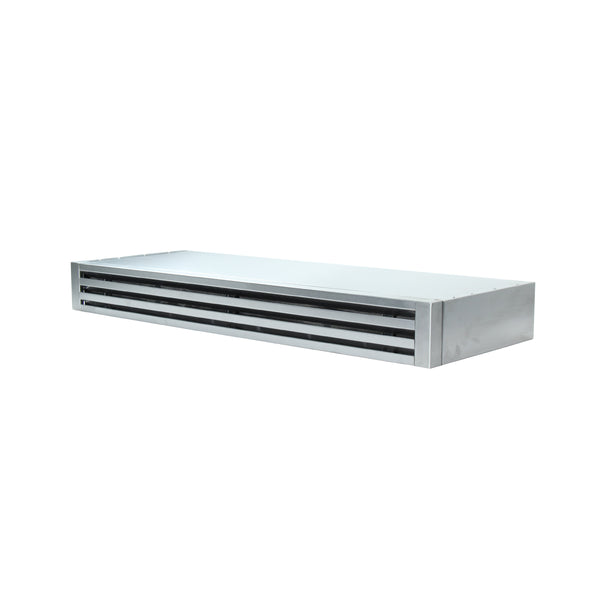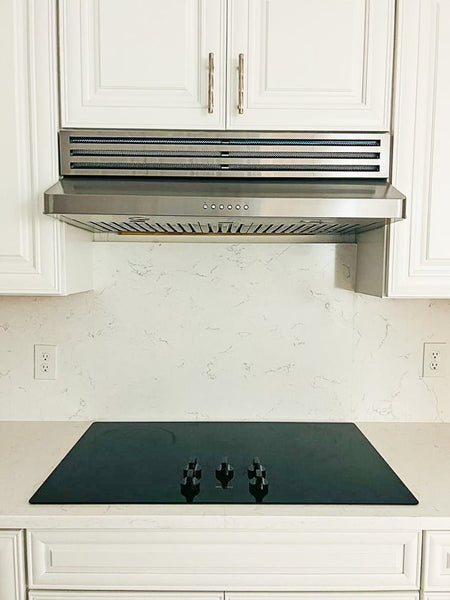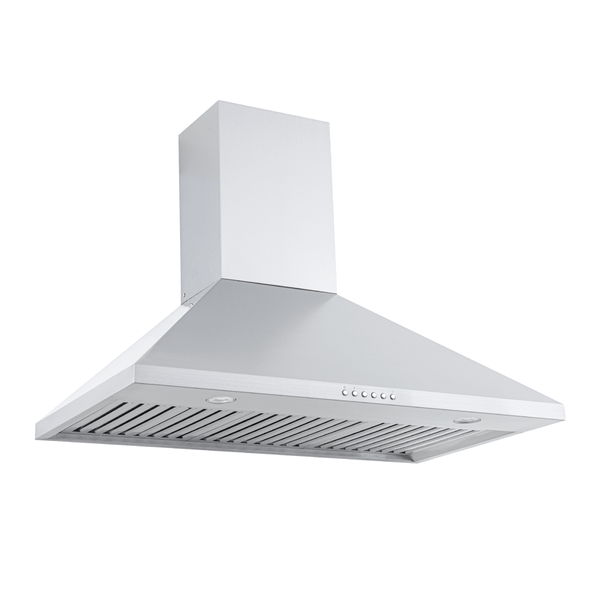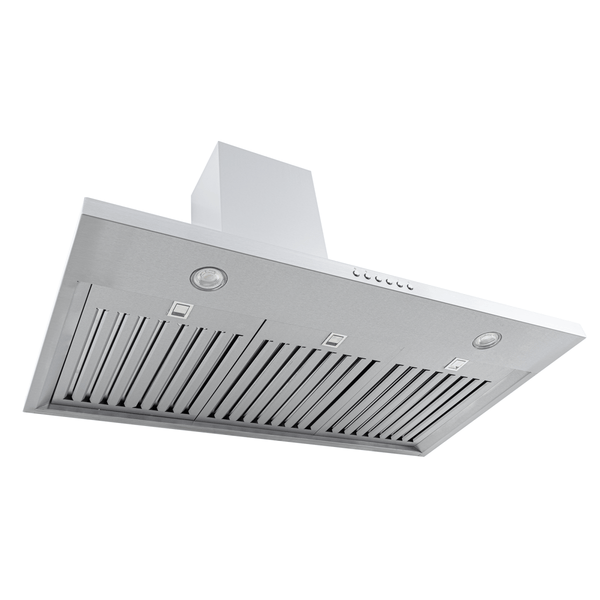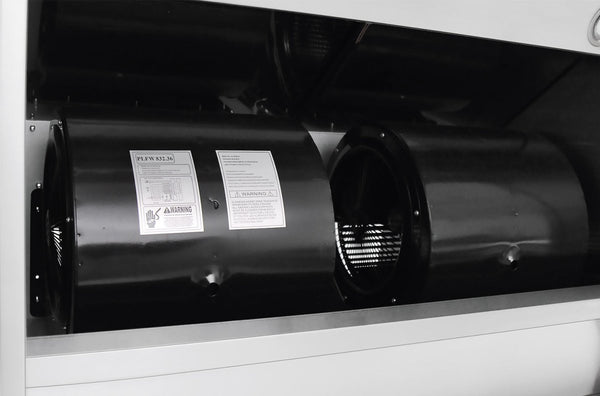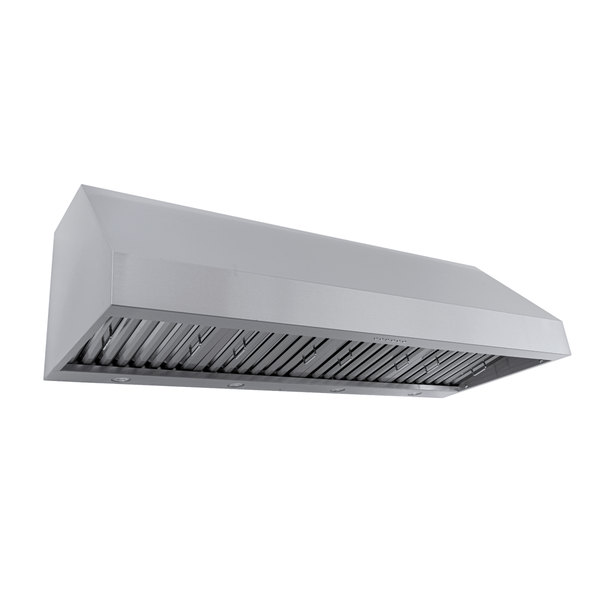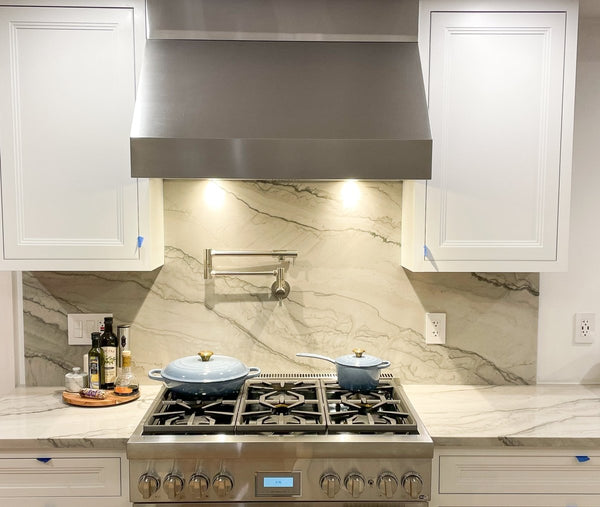When shopping for a range hood, you may have considered its width, cubic feet per minute (CFM), and the style. These are, after all, three of the most important features to consider when shopping for a range hood.
However, one aspect of kitchen exhaust fans that is often overlooked is the range hood's duct size and configuration.
Table of Contents
This is just as important, if not more important, than range hood CFM. Regardless of the CFM of your range hood, if you have ductwork that is too small, it will not run at maximum efficiency.
So, it is in your best interest to identify the right duct size before you make your purchase. This will help you avoid hurdles and unexpected costs down the line. Also, the right range hood duct size will ensure that your hood is efficient and quiet for years to come.
Ductwork for a range hood?
Duct sizes range from 6", 8", and 10"
Important: Always consult your specific range hood's specification sheet for exact ductwork requirements. Hood design, static pressure requirements, and installation conditions can affect optimal duct sizing.
Range Hood Duct Length
Next to ductwork size, the length of your ductwork is important to consider.
In some cases, even if your ductwork is a little undersized, you can still exhaust the cooking air efficiently if you have a very short run or length of ducting.
Key Ductwork Guidelines:
- Shorter is better: Your air needs less velocity to reach the outside
- Minimize elbows: Each direction change adds resistance and pressure
- Upward is optimal: Hot air rises naturally, helping airflow efficiency

Maximum Recommended Duct Run: 30 feet
Elbow Penalty: Subtract 5 feet from maximum run for each 90-degree elbow
Example: With 2 elbows, maximum recommended run is 10 feet (30 - 10 = 20)
Since hot air rises, upward ducting is always the best way to go in the kitchen. It will help move the air out of your home faster.
Frequently Asked Questions
What is the minimum duct size for a range hood?
The minimum duct size for a range hood is 4", which is ideal for range hoods 400 CFM and under. The higher the cubic feet per minute, the larger the duct you'll need. At 600 CFM, the minimum duct size is 6". At 900 CFM, the minimum duct size is also 6". Finally, at 1200 CFM and above, consider a 8" or 10" diameter duct.
Is it OK to vent my range hood into the attic?
Never vent your range hood into the attic. The buildup of chemicals, grease, and smoke in the attic can be harmful to your health over time. Ideally, vent it out an exterior wall.
How do you reduce duct size?
It is not recommended to reduce duct size. This typically decreases the efficiency of your kitchen range hood and wear out the motor prematurely by restricting the flow of air as it travels through your ductwork.
In rare cases, only if the ductwork is several inches larger than necessary, will your ductwork need to be reduced. Ductwork that is too large will drastically reduce the velocity of air as it moves to the outside of your home. It may not reach the exterior of your home.
But, this is highly uncommon. It's more common that ductwork is too small and restricts the flow of air. For that reason, it is highly recommended to purchase larger ductwork rather than smaller ductwork.
One common concern we hear from customers at Proline is that their kitchen hood is not running efficiently. This is often because their ductwork is too small given the CFM of their range hood. If your ductwork is even an inch or two smaller than we recommend, you will notice a decrease in the performance of your hood.
If you are dealing with ductwork for your new hood that is smaller than we suggest, we recommend replacing your ductwork with a more appropriate size or converting the vent hood to recirculating.
But, you should always vent outside if possible and only install a recirculating hood in your kitchen as a last resort.
Is a round or square duct better?
The general consensus is that a round duct is more efficient and cost-effective than a rectangular duct. Air systems with round ducts have less air resistance because they use significantly less metal than rectangular duct systems. This also means that round duct is the cheaper option.
Can you use PVC duct for a cooker hood?
We don't recommend using PVC duct for your range hood. It's not nearly as durable as aluminum or stainless steel ductwork. You should also avoid flex duct for your range hood; it won't last very long!
Read more about what type of duct is best for your hood in this article.
Can I use a periscope duct for my vent hood?
We don't recommend using a periscope duct for your vent hood. Instead round or rectangular duct is best since there's much more room for the air to move.
How to Clean Range Hood Duct
If you've already purchased your hood, you are probably here because your kitchen range hood is not running efficiently. This could be due to a greasy range hood duct. Unfortunately, cleaning this duct can be quite expensive and requires professional assistance. For a complete guide on duct cleaning for your kitchen fan, click here.
To avoid the hassle of duct cleaning altogether, remember to clean your filters every three to four weeks depending on your cooking habits.
Can you expand an existing kitchen hood system?
That depends on your kitchen setup. If you currently have ductwork in your home, the most affordable option is to use the existing duct. Expanding your duct system will cost more money for installation. Also, you might not have the room to expand it, if electrical wires or studs are in the way.
Consult a licensed contractor to ensure you make the right decision on your range hood duct system. If you have questions, we'd be happy to talk with you about what expanding your existing kitchen hood system might look like. Give us a call at 877.901.5530.
Can you convert a 7 in. round ducted range hood to vent to a vertical outside vent?
Some range hoods have rotatable blowers, which allow you to vent horizontally through a wall or vertically through a wall or the ceiling. With a rotatable blower, you can convert the hood from horizontal to vertical venting. But, if the ductwork is already installed, this is not recommended. It can be quite expensive to rearrange the ductwork.
Recap
Hopefully you found this guide on range hood duct size helpful. Range hoods are a beautiful and functional addition to your kitchen that can last for years with the proper maintenance.
What exactly is CFM? Here's a deep dive.
Check out more of our comprehensive content on range hoods below.
Related Articles
- Best Range Hood for Asian Cooking
- 4 Ducted Range Hood Venting Options
- 5 Best Wall Range Hoods from Proline
Need help choosing the right range hood for your kitchen?
Call Our Experts: 877-901-5530If you need to replace your range hood duct, contact a local HVAC or ductwork specialist.
Explore our hoods, including under-cabinet, wall-mount, island, outdoor, and insert range hoods.

